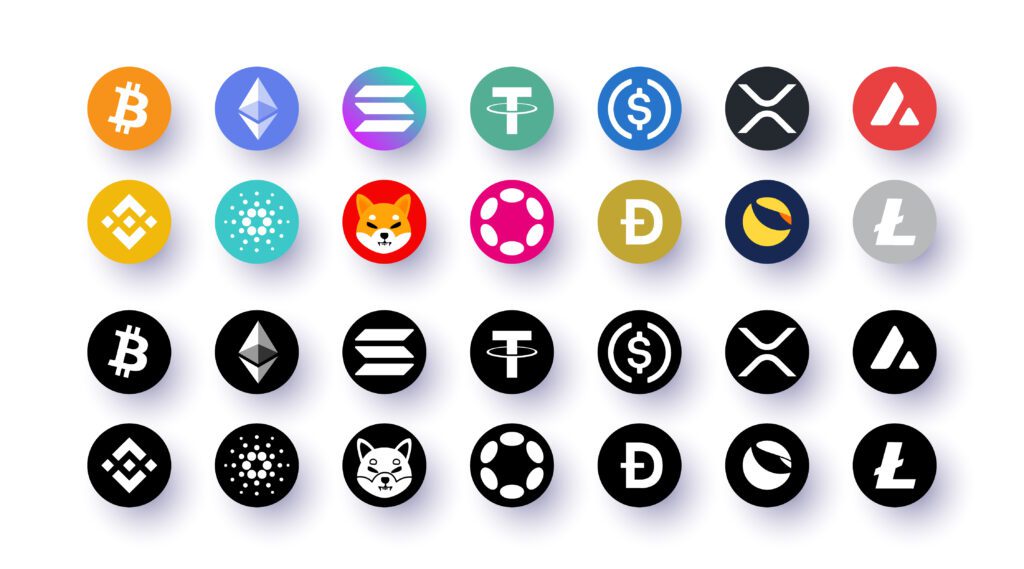

The year 2022 has arguably been the craziest year for cryptocurrency so far. The market remained mostly bearish. Many altcoins went to zero, crypto exchanges went bankrupt, and six-figure hacks are some of the headlines from 2022 that we want to forget. That makes us wonder how 2023 will play out. Most experts believe that the worst of the crypto market is behind us, we have reached the bottom. The market now should gradually start to recover. Now it is a great chance to get into crypto while the prices are still low. However, you should be very careful while investing. With more than 12000 cryptocurrencies to choose from, it is easy to get overwhelmed and pick up bad crypto without knowing their use cases. So, here in this article, we will explore the top 10 cryptocurrencies with strong fundamentals that I believe will survive the test of time.
Disclaimer: Nothing in this article is financial advice, please consult your financial advisor before investing in any cryptocurrency.
Also, it is given that Bitcoin should be part of your portfolio. Being the most valuable cryptocurrency, Bitcoin is a must in your portfolio.
Top 10 Cryptocurrency Picks for 2023
1. Ethereum (ETH)
My top pick for the next bull run would be Ethereum. It is the king of all coins and is likely to survive in the long run. It is a decentralized layer 1 blockchain that provides smart contract functionality. Smart contracts are self-executing programs that run on the Ethereum blockchain, and allow participants to transact with each other without the involvement of any central authority. As smart contracts are gaining popularity, Ethereum is likely to rise as well.
It is the second most valuable cryptocurrency, with a valuation of over $180B just behind Bitcoin. Some of the major use cases of Ethereum include-
- Smart contract
- Decentralized Finance (Defi)
- Non-Fungible Tokens (NFTs)
- Decentralized autonomous organizations (DAOs) and many more.
Ethereum is not just any other coin that comes and goes. It is here to stay. With so many practical use cases, Ethereum is a must-have in your wallet.
2. Polygon (MATIC)
Polygon (MATIC) is the First and most widely adopted layer-2 solution. It is a Layer-2 network, to put it simply, it acts as an ‘add-on’ layer over the Ethereum blockchain to scale the Ethereum network and improve its functionality. Layer-2 solutions group thousands of transactions into batches, thereby reducing the overall load on the layer-1 network. It also lowers transaction fees.
Right now, Polygon (MATIC) is the leading layer-2 scaling solution for Ethereum. As Ethereum continues to dominate the decentralized applications(dApps) space, Polygon is also expected to get more and more adoption.
Another reason why I am confident about Polygon is that, unlike other layer-2 scaling solutions, Polygon supports all types of layer-2 technologies. Technologies like PoS Sidechain, Optimistic Rollup, ZK Rollup, App Chains, and Privacy Chains work seamlessly with the Polygon network. It seems like it is determined to stick to the Ethereum layer-2 narratives. This makes Polygon extremely flexible and highly likely to survive in the long run.
3. Cosmos (ATOM)
Cosmos strives to be the internet of blockchains with an ever-expanding ecosystem of interconnected apps and services. Cosmos apps can seamlessly communicate with each other using the Inter-Blockchain Communication protocol or the IBC. Customizability and Interoperability are what sets Cosmos apart from other projects.
ATOM is the native token of the Cosmos hub. Even though it is a great technology, it has remained undervalued for a long time. ATOM staking has been inflating the token by 10-20% annually. ATOM also doesn’t have a cap on total supply. The ATOM token did not have any real utility in the Cosmos blockchain. However, things have changed now with ATOM 2.0
ATOM 2.0 aims to reduce inflation from 10% to 1% or less which is a significant change. Cosmos Hub announced adopting a technology called ‘Interchange Security’, which will allow new applications to build their own chain on top of the Cosmos stack, borrowing the security and validator set of the main Cosmos Hub. In return, they will pay fees that will go to the ATOM stakers.
More importantly, there is a really good team and community behind Cosmos. In my opinion, ATOM deserves to be a top 10 coin along with Bitcoin and Ethereum.
4. Algorand (ALGO)
Algorand is yet another great layer 1 blockchain that distinguishes itself from other key players like Bitcoin and Ethereum by using a Proof-of-Stake(POS) consensus mechanism. Over the last few years, other layer-1 networks like Fantom, Avalanche, and Solana have tried to compete with Ethereum, but only ALGO stood out in the race and emerged as the real Ethereum Killer. It aims to solve the most critical problem associated with the blockchain ecosystem ‘blockchain trilemma’ – speed, scalability, and security. While Bitcoin can process just 7 transactions per second (7 TPS), and Ethereum currently has a TPS of 27, ALGO can handle 6000 TPS. This helps achieve scalability. It also aims to be a carbon-negative green network. There have been a lot of developments and a strong community behind them.
It is a great candidate for the next bull run.
5. Aave (AAVE)
Aave is a decentralized open-source lending protocol that allows users to lend or borrow cryptocurrency without the involvement of any third party.
It is one of the leading DeFi protocols with a market cap of over $1.24B. it is a well-established project in the DeFi ecosystem with strong fundamentals. AAVE is the native token of the Aave protocol.
In my opinion, Decentralized Finance (DeFi) is going to play a big narrative in the next bull run. Defi is already being adopted by the government and financial institutions. For example, in the recent Singapore FinTech Festival, JP Morgan and DBS Bank announced they have conducted trades using DeFi protocols on a public blockchain. Defi has already attracted many of the world’s leading financial institutions, funds, exchanges, and family offices, with higher yields compared to traditional finance.
6. Filecoin (FIL)
Filecoin is a peer-to-peer file storage network built for the decentralized internet. Cloud computing is a billion-dollar business today. Most blockchains run on data centres built by giant tech companies like Amazon, and Google which are centralized. With the rise of Web3, decentralized storage becomes essential. It allows customers to store their data efficiently in a completely decentralized network at a very low price. Filecoin uses Interplanetary File System or IFS to efficiently integrate with other decentralized web hosting/applications to more efficiently store and share files with anyone in the blockchain. It is popular for NFTs, decentralized websites, or any picture or video that people want to keep without censorship.
As Web 3.0 emerges as the next big tech, more and more applications will integrate with Filecoin, which will create a huge demand and thereby surge the price.
7. Ripple (XRP)
Ripple is a leading digital payment protocol based on the decentralized blockchain network. It connects financial institutions, payment providers, exchanges, and corporations via RippleNet to process transactions globally. It aims to replace the SWIFT network that processes international money and security transfer. Ripple network processes transactions incredibly fast at a very low fee. Cross-border payments are made very easily through RippleNet. That provides a significant edge over the traditional SWIFT network payment.
World’s leading banks like Bank of America, PNC Bank, and Standard Chartered Bank, have already implemented Ripple in their payments system.
XRP is the native token of the Ripple network. It holds a strong position in the international banking industry. As more and more financial institutions adopt blockchain, XRP will likely expand.
8. Arweave (AR)
It is a blockchain protocol that offers data storage on a decentralized network for a one-time fee. It connects users who need data storage to those who have storage available on their hard drives. The connection is secured by a decentralized network that ensures data is available on demand. It enables storing data without censorship.
Launched in 2018, Arweave is one of the fastest-growing ecosystems in the Web3 space. They already have more than 100 projects in their belt. It has huge use cases in decentralized Web 3 products like social media and the web. For example, Instagram is using them for NFT file storage. This trend is only going to get bigger as Web3 grows.
Arweave is my favorite pick from the Web3 infrastructure space.
9. Polkadot (DOT)
Polkadot protocol allows different blockchain networks to securely talk to each other. For example, Bitcoin and Ethereum blockchains can communicate with each other using this protocol without involving any intermediary. Thus Polkadot plays a big role when it comes to Interoperability within blockchain networks. As blockchain networks expand further, Polkadot is going to play a critical role.
DOT is the native token of the Polkadot blockchain. DOT has the potential to grow to the level of the Cosmos ecosystem and beyond. It looks highly undervalued at this moment, this could be a great pick for your portfolio.
10. Sandbox (SAND)
Sandbox is a popular multiplayer Metaverse where players can create, monetize, and participate in blockchain-based gaming experiences. Metaverse is going to be a big narrative in the coming years. SAND is the native token of the Sandbox network. SAND can be used to buy and sell NFTs and other in-game items.
If you believe in the Metaverse, Sandbox should be in your portfolio. It is the undisputed leader in this segment.
Do let me know in comments if I missed any Cryptocurrency that you think should be added here. Would love to hear your feedback.








